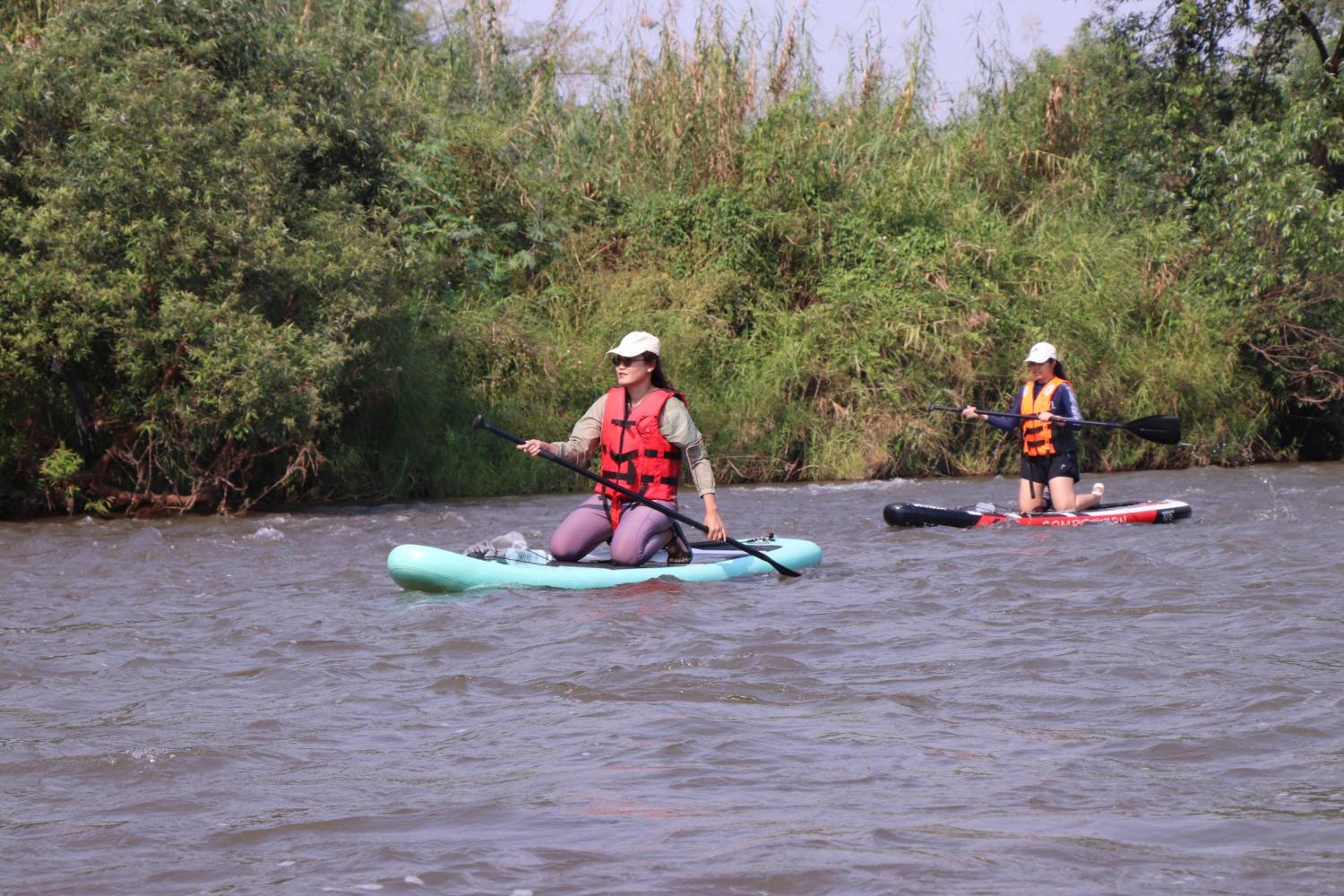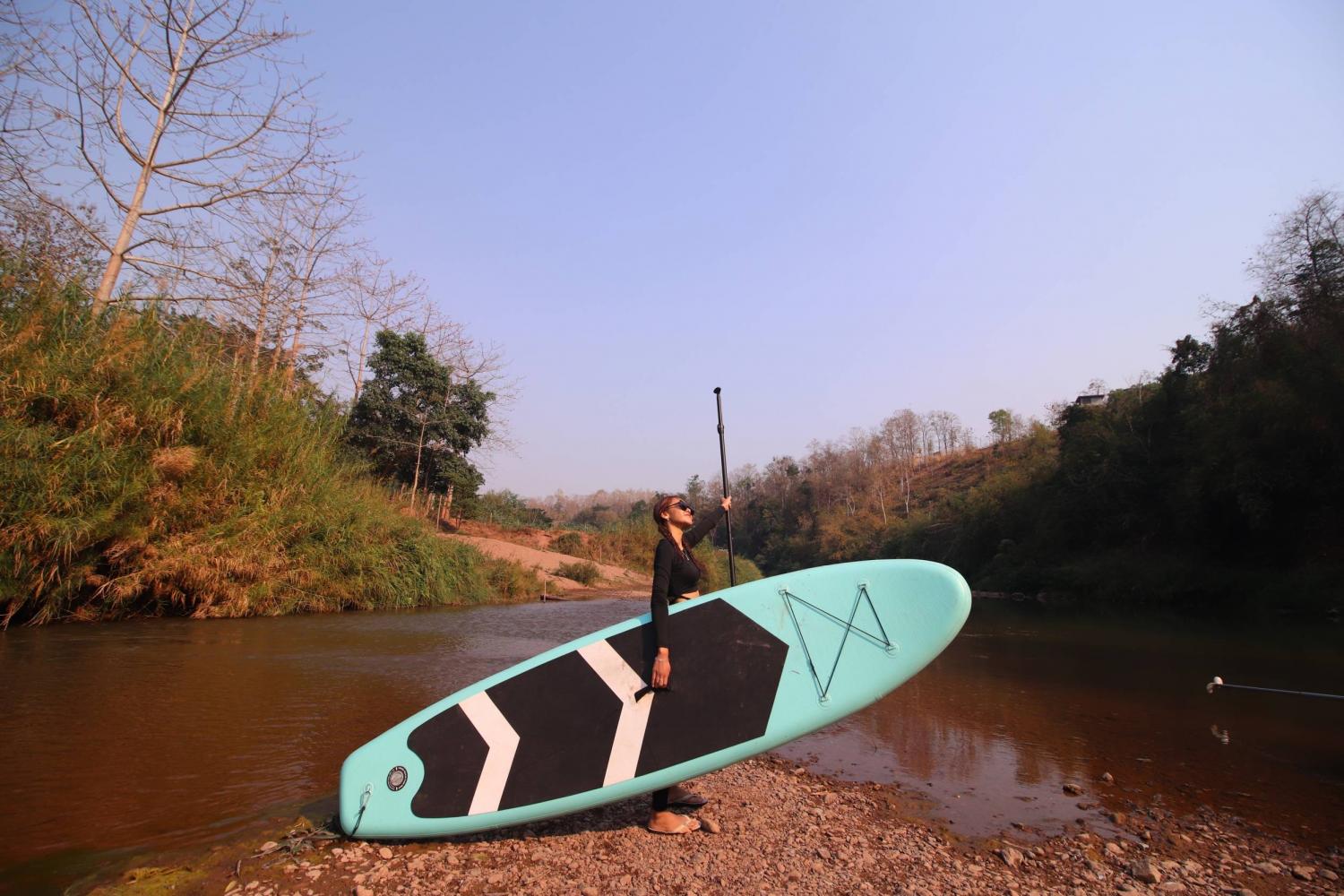
Late in the morning, my caffeine-dependent friends and I made a pit stop at the newly opened Pua Tobacco Barn Café & Eatery to refuel before leaving the popular town of Pua, close to the Xienghone-Hongsa special economic zone between Nan and Laos.
Sitting there and observing the surroundings reminded me of the good old days when Pua district served as one of the Tobacco Authority of Thailand's primary suppliers in the northern region, with more than 1,000 rai of tobacco plants spanning the whole neighbourhood.
This 100 rai compound was once home to more than 130 towering tobacco barns before 27-year-old entrepreneur Kittipong Lao-araya and his family transformed some of the space into a cafe to highlight the heritage of Nan's tobacco business, which began in 1955.
The conversion of the previous office into a barista counter and dining area was complete with a series of repurposed vintage furnishings, including watering cans, a pump and iron storage boxes as well as wood trunk crates on which a specific reference number for the tobacco barn was written.
"The government once encouraged local farmers to cultivate tobacco to increase revenue for local farmers after the rice harvest. At the time, my family expanded our business from a hotel to a tobacco barn. The Tobacco Authority of Thailand provided us with tobacco saplings, which we then distributed to farmers. The maturation process took around three months and then farmers delivered all of their produce to us," Kittipong said.









"Our firm generated one million kilogrammes of dried tobacco a year and delivered them to the Tobacco Authority of Thailand's main office in Phrae province. Seven kilogrammes of fresh tobacco may be converted into a kilogramme of dry tobacco, which is used to manufacture Thai cigarette brands like Krong Thip and Sai Fon."
The Lao-araya family still maintains 24 tobacco barns, where visitors can observe how the buildings are made as well as how tobacco is dried and cured. Each structure has a lofty ceiling, numerous small apertures and smokestacks that allow air to circulate throughout the building. Before being infused, the tobacco plants are piled on 12 layers and suspended on poles upside down to dry and cure.
"The barn was first constructed out of bamboo and covered with earth, and later we used brick instead to ensure stronger structures. For three weeks, a stove provides heat through a conduit to the tobacco plants. Currently, electricity is used to dry tobacco instead of wood and lignite that pollutes the air," he added.
"As a result of rising cigarette taxes, people now favour smoking cigarettes from other countries over Thai brands. The price difference is not as great as in the past. Thai tobacco is declining because it can't compete in terms of quality with other exporters on the global market."
While browsing, visitors can try excellent Doi Phu Kha coffee or Korean strawberry matcha, which can be paired with homemade pastries. Kittipong also plans to offer accommodation, art exhibitions and other leisure activities in the future.
After a 90-minute drive from the tobacco barn to the peaceful town of Wiang Sa, our van halted on the banks of the Wa River, where we joined a skilful crew from the Sup Board Wiangsa Club on a 7km pleasure cruise.
Khomsan Simmathong and his crew members gave us life jackets and conducted a quick training session to introduce stand-up paddleboarding to the novices. We learned how to stand, sit and balance ourselves on a board as well as how to climb onto a board after falling into the river.



Despite the rising heat, the gentle waves of water kept us at ease all day while observing local life along the riverbanks. Wiang Sa district is known as the "Town of Seven Rivers" and 90% of the residents in the village cultivate longan and seasonal vegetables like cabbage and Chinese cabbage as well as other salad greens to sell at a wholesale market in Nan.
In the past, villagers in the neighbourhoods of Mae Charim and Bo Klue boiled salt water to make pure salt and transported their products to the mouth of the Wa River, a significant trading centre. The barter system was used to sell fresh vegetables, salt and dried tobacco. This route served as a key transportation mode for the waterside communities.
"We set up our club last year and as of now, it has 12 members to offer a programme of eco-friendly cruises in promoting sustainable tourism in Wiang Sa. This activity can help strengthen family ties, while tourists can also explore the river and learn about local life and the natural ecosystem," said Khomsan, who spent several years working as a registrar for Nan's community-based tourism and now serves as a consultant for the Sup Board Wiangsa Club.
"Normally, our journey starts at View Wa Café and takes us to the estuary of the Wa and Nan rivers, but this year's weather patterns drastically reduced the water levels. That's why we go on to the Wa River, which is great for both a half-day excursion and a full-day camping trip between October and February. The Huay Hi Reservoir is a perfect place for beginners to learn all the basics throughout the year."
Amid a lush environment, our adrenaline started racing as we encountered several rapids and realised that we had to figure out how to stay on the board and ride the waves while crossing over them.
We carried on and soon passed through a lush bamboo forest to land on a little beach, where a stove was set up for a BBQ party. We were served grilled chicken and fish along with a variety of juices and soft drinks for refuelling and our cruise ended at the View Wa Café just in time for the sunset.




The next morning, our sightseeing tour began at Wat Bun Yuen, where we marvelled at the exquisite fusion of Lanna and ethnic architectural arts, representing the rich multicultural legacy. The temple was first built by Phraya Wiang Po and relocated to its current site in 1786 so that local pilgrims could come to perform the daily rituals.
The temple underwent multiple renovations before the Fine Arts Department added it to the list of national ancient monuments in 1994. Its teak historical ubosot is built in the Lanna style, and the etched doors boast the gods Indra and Brahma riding Erawan, a white elephant with seven heads.
The walls feature a variety of low-reliefs and sculptures of Himmapan animals as guards, while the pillars are embellished with coloured glass and many gold-carved designs. Inside, it is home to a revered Lanna-style Buddha statue in preaching posture, while the Phra That pagoda stands behind the ubosot.
Just a one-minute walk from the temple, Hakka entrepreneur Narit Puttekulangkura and his family have turned their classic shophouse into a living museum called Sadud Wela to illustrate the nostalgic scenes of Wiang Sa's thriving commercial hub around 80 years ago.
Chinese immigrants who came to Wiang Sa after World War II first worked as labourers before realising the possibilities of trade. The Puttekulangkura family established the first two-storey shophouses in the town in 1947, pioneering the retail industry. They created a store to offer a variety of domestic goods, supplies, clothing and even electronics, as well as agricultural and construction equipment.
"My grandpa managed a tobacco barn before expanding our business to a retail store. In the beginning, we travelled to Bangkok by train, bringing with us all the seasonal goods from Sampheng and Yaowarat in addition to middlemen from the Den Chai district of Phrae province. Later, our shop was closed after a distribution network was established to provide retailers and customers with convenience," Narit said.
"This was the first two-storey house in Wiang Sa, and during floods our neighbours would seek refuge here. My grandfather and his friends established a Chinese school to provide local children with a rudimentary education."
The museum just welcomed visitors late last year and is now undergoing refurbishment. According to feng shui, a living room should have a translucent roof that lets the sunshine in and drainage channels all around it to collect rainfall, which symbolises money.
Metal tools imported from Germany and Japan, kitchenware and monastery supplies are among the vintage goods that are on display.







Travel Info
- Pua Tobacco Barn Café & Eatery is at 130, Pua district, Nan. It's open daily 9am to 4.30pm. Find out more details at facebook.com/PX107PUANAN.
- The Sup Board Wiangsa Club offers stand-up paddleboarding training for 200 baht per hour and a four-hour tour costs 600 baht per person for a group of five or more. To get further information, visit facebook.com/SupBoardWiangsa
- The Sadud Wela Museum is at 285-287, Wiang Sa district, Nan. It's open between September and October from 8.30am to 4.30pm. Tickets are 20 baht. Add Line @nhanlhor to find out further details.







